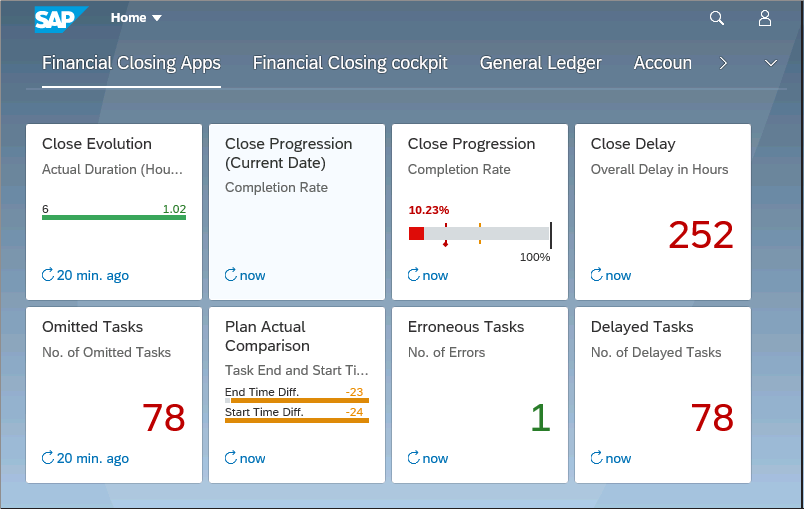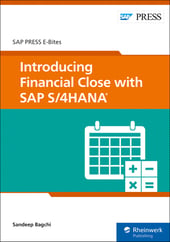Speed and accuracy—that’s what a successful entity close comes down to. A CFO/finance leader who closes the quarter’s books quickly, and nails the numbers, makes for a happy CEO.
Simple enough, right? The reality gets a bit more complicated, though my experience with clients reveals at least a few common denominators. The entity close process is fundamentally about executing a series of routine interrelated and interdependent accounting tasks during the accounting cycle, with the ultimate goal of generating internal and external financial reports.
For many CEOs, top priorities include not just closing the entities faster, but also generating accurate data to publish in financial reports. Hitting those targets takes deft number-crunching skills, yes, but increasingly, the right technology.
In my time at Accenture, I’ve been fortunate to work with many astute client CFOs who apply understanding of the company leadership’s requirements to help drive and shape the CEO agenda. To ensure sufficient time to thoroughly shape the priorities in recent years, CFOs have assumed a more strategic role focused on driving the creation of value across the entire business. A well-functioning finance department with an efficient close process is essential for the credibility and hard data you need to make difficult arguments.
Role of SAP Financial Close Technology
During any close, it’s critical all entities follow the same process to ensure consistency when reporting data. In my previous blog post, I discussed broader financial close challenges and how to tackle them; in this post, we’ll focus on technology’s role in achieving a streamlined and transparent close process, while meeting all regulatory requirements.
I’ve also been fortunate to be a part of a long-running partnership with SAP, which provides many of the technology capabilities—namely, through SAP S/4HANA solutions—you need to streamline your close process. To me, two SAP tools in particular stand out:
- SAP Financial Closing cockpit for SAP S/4HANA (sometimes called FCC)
- SAP S/4HANA Cloud for advanced financial closing (sometimes called AFC)
SAP Financial Closing cockpit for SAP S/4HANA can be deployed on the cloud or as an on-premise solution and is now a part of the core SAP S/4HANA suite since the 1709 release. The functionalities in FCC are quite similar to AFC, which is the new closing solution from SAP. The latter is only a cloud-based solution and has more features to integrate the end-to-end close involving SAP and non-SAP ERP applications. Both SAP Financial Closing cockpit for SAP S/4HANA and SAP S/4HANA Cloud for advanced financial closing are standard SAP tools to plan, execute, monitor and control the entire period-end closing cycle. These tools take the hub approach to provide the following capabilities to the finance users:
- Integration
- Single task-list for entity close, serialized for multiple organization units across the globe for various close cycles
- Seamless integration with planning, consolidating, and reporting
- Automated closing tasks, even in remote systems
- Governance and compliance
- Complete audit trail, logging of results and documentation
- Built-in system notifications for approval with user-defined escalation rules
- SAP Fiori-enabled apps for an enhanced UX, and a centralized view of the end-to-end close progress
- Financial digital transformation
- Real-time insight into the closing status
- Reliable and auditable data for improved analytics and decision making
- Data points to identify and analyze process improvements
Improving Entity Close: A 5-Step Action Plan
When looking to improve entity close with SAP, follow these five steps.
1 Define a Global Checklist
The first step in an entity close is to create a template or a global checklist containing the set of individual tasks that are required to be executed during the close process. It should contain all of the relevant closing tasks: month end, quarter end, or year end, irrespective of the applications they are executed. The leading practice in SAP is to create a single template that includes all closing tasks and make sure each of these tasks are clearly flagged according to the type of close category they belong. The system provides the flexibility to have multiple templates based on the types of close as well.
2 Prepare for the Close
The generation of the task list from the closing templates marks the beginning of the actual closing process. Each activity after the generation of the task list is important for the accounting trail and for any post-close audit review. It is strongly recommended that the generation of task lists should be a centralized function of the CFO office (accounting department) to ensure a harmonized close across all the entities involved during the close.
Based on the closing type selected from the task list generation, the system transfers only those activities that are permitted in the task definition for that closing type from the template to the task list. Once the task list is generated from the template, the task status controls numerous activities before the actual start of the close. These statuses provide information regarding the progress of the executed tasks in the task list.
3 Execute the Closing Tasks
The functionality in this step differentiates the FCC and AFC from the rest as it covers the process (and magic!) of running the closing process from a single screen with a real-time dashboard showing the close status. The real-time updates for the close helps both corporate managers and subsidiary managers to monitor the status of the closing process in respect to the levels of their own responsibilities, without being dependent on emails or phone calls. The tasks in the task list can either be executed online or scheduled as a batch job in the same or remote instances. The applications are designed to keep records of who processed the task, including the date, time, and system detail stamps. Alerts and notifications can be set for different scenarios in the task execution during the close to improve collaboration within the close team.
4 Monitor and Control
The centralized close status hub provides a visual view of the progress of all the closing tasks, and it removes the ambiguity of the overall status of the close. The predefined dependencies and checks within the task list ensure that the right sequence for the closing process is followed and help avoid any delay due to human errors. The alerts and notifications allow to proactively communicate the status of the close. Any deviation from the planned timeline for the close activity triggers a systematic alert to support any proactive decision and get the close back on track. The task status reflects the progress of the close. Inbuilt SAP Fiori reports keep track of all of the changes at the individual task list, task level, and template level.
5 Reporting and Analytics
SAP’s out-of-the-box SAP Fiori UX has two separate types of apps for the SAP Financial Closing cockpit. The first type includes the standard apps to manage the template and the task list for the users who are responsible for managing and controlling the close task list. The second type helps to manage the critical and strategic KPIs of the business during the close. The figure below shows the analytical apps that are now available in the SAP Financial Closing cockpit for SAP S/4HANA.

Ahead with Financial Close in SAP S/4HANA
In 2014, Gartner introduced the concept of bimodal IT, which deals with the simultaneous management of two separate but coherent capabilities of an ERP landscape. According to this concept, mode 1 operations are traditional, emphasizing scale and control, whereas mode 2 is an exploratory model of work that supports innovation and emphasizes agility and speed. Marrying the more predictable capability of mode 1 with the innovation and agility of mode 2 creates the value that drives digital transformation in an organization.
In line with Gartner’s bimodal IT, SAP’s two-tier ERP strategy with SAP S/4HANA allows us to leverage two different ERP modes. The mode 1, or the digital core, is a system of records that provides the opportunity to standardize and optimize the end-to-end core business processes. The mode 2, or the digital innovation system capabilities on SAP S/4HANA Cloud, allows to differentiate the business by leveraging the benefits of SaaS solutions with a faster time to implement using preconfigured solutions to lower the total cost of ownership.
I feel that the future of SAP’s financial close solution will leverage this two-mode ERP strategy of the system landscape. SAP finance users in corporate subsidiaries can continue operating on the mode 1 approach, providing opportunities to standardize and optimize the entity close process with the SAP Financial Closing cockpit for SAP S/4HANA. Corporate headquarters are better geared to leverage the mode 2 cloud-based approach for centralized closing with subsequent consolidation, planning, and forecasting. Based on SAP’s priority of leveraging cloud-based solutions, SAP S/4HANA Cloud for advanced financial closing will play a bigger and stronger role to drive financial excellence through close.
To better understand how finance users can reduce the time spent supporting the close process in SAP S/4HANA and reprioritize other value-adding activities within their organizations, read my E-Bite from SAP PRESS, Introducing Financial Close with SAP S/4HANA. Also, learn how Accenture can help you stand up to resilient finance capabilities with SAP solutions.
Learn more about SAP S/4HANA Finance here.
This post was originally published 2/2021.



.png?height=600&name=Exploring%20SAP%20S4HANA%20Advanced%20Financial%20Closing%20(AFC).png)
Comments